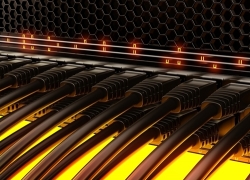Power redundancy should be part of a DR plan
Power redundancy should be part of a DR plan

Having a data center disaster recovery plan is a crucial aspect of owning and operating data center space. When a data center is forced to go offline due to preventable issues like fire and some power outages, companies lose valuable computing power, which can cause loss of revenue and customers. The Disaster Recovery Preparedness Council's 2014 Disaster Recovery Benchmark survey reported that 20 percent of respondents experienced data center outages that caused more than $50,000 in losses, all the way up to $5 million. Worse, more than 60 percent of those surveyed didn't have a fully documented DR plan.
To avoid the kinds of losses reported by the survey's respondents, it's important for companies to implement an efficient, successful plan for DR. One way businesses have done this in the past is by implementing redundant emergency power systems.
Power redundancy: an overview
When companies utilize data center redundancy as part of their disaster recovery plans, it means they are often creating a backup of their data. An IT component is duplicated so that in the event of failure, there will be another one to use in place of the original. According to Computer Weekly, servers or network system components like fans, hard disk drives, operating systems and telecommunications links can all be made redundant.
Power redundancy is good for data centers because it allows for a backup to be created in case of a power outage or other disaster. However, there is also such a thing as creating too much redundancy in the server room. When duplication is unnecessary, it creates waste and takes up processing power better used for more important tasks.
Types of emergency power supplies
There are several ways data centers can get emergency power in the event of a disaster. Businesses should weigh their options when considering emergency power implementation. Here are three of them:
- Uninterruptible power supply - This is the most common form of emergency power. According to TechTarget, during outages, the UPS uses batteries to provide power to its connected systems. The number of batteries is typically congruent to how long power can be supplied.
- Emergency power generators - These are diesel- or gas-powered machines and can keep servers and cooling systems online in the event of an outage.
- Redundant power distribution - Power can be funneled from redundant components throughout the IT infrastructure. TechTarget stated that a data center should have at least two utility feeders in order to facilitate redundancy.
Prevention is key
In order to protect data centers against power failure and other disasters, it's crucial for enterprises to put a DR plan in place, but it's even more important to prevent outages before it's too late. Emergency power systems are good to have installed in the event of data center disaster, but prevention is always the best way to keep your data center online and performing the functions you need. Equipment like Geist's power monitoring PDUs can help businesses keep track of power usage and environmental factors like temperature and humidity. This way, companies can have actionable information about the status of their server rooms and can take steps to make sure outages don't occur.



